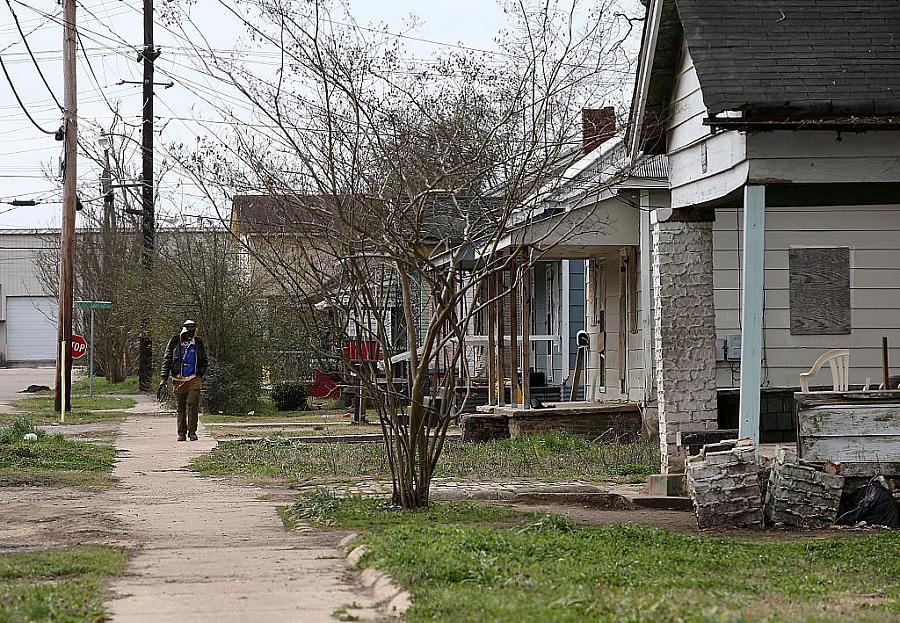If neighborhoods are the real bosses of health, why aren’t we getting the story?

Photo Justin Sullivan/Getty Images
“Your ZIP code matters more than your genetic code.”
That’s what Dr. Anthony Iton, senior vice president of healthy communities for the California Endowment, often tells journalists when delivering his signature talk on the social drivers of health.
I was already well aware of this fact when Iton shared it with a room full of other reporters during the 2016 National Fellowship. But perhaps I didn’t fully appreciate the extent to which neighborhood conditions shape health.
My reporting project went on to profile six Indiana ZIP codes with high rates of infant deaths. In one ZIP code, located in an industrial city in the northwest part of the state, kids were eight times more likely to die during their first year of life than in a ZIP code in a wealthy suburb of Indianapolis.
Studies in the years since have brought the impacts of neighborhood disadvantage on childhood health into even starker focus, showing how growing up in areas with poverty, pollution and discrimination molds children’s lives. This line of research presents a plethora of story ideas for reporters who can find a local angle or data source.
One newer research project looked at the effects of neighborhood disadvantage on kids’ neurocognition. It’s also another entry in the growing field examining how the brain is shaped by outside forces early in life.
“The research highlights that neighborhoods matter, that neighborhoods have a role for brain and cognitive development independent of the characteristics of individual children and independent of family characteristics,” Daniel Hackman, an assistant professor at the USC Suzanne Dworak-Peck School of Social Work and lead author on the August 2021 study in JAMA Pediatrics, told me. “There's a story about neighborhood environments for brain development, consequently, that highlights the importance of promoting neighborhood equity based on the local conditions and improving health overall.”
The research looked at data from nearly 8,600 kids who took part in the national Adolescent Cognitive and Brain Development study. It found that living in disadvantaged neighborhoods was associated with worse cognitive performance in areas like attention, inhibition and working memory, as well as lower brain surface areas and volumes.
Hackman cautioned that it was a correlational study, so causal relationships couldn’t be established, and that neighborhood disadvantage does not predict any particular outcome on an individual level. Plenty of kids raised amid adversity thrive, he noted. Identifying those paths to resilience is key to designing effective programs and strategies for struggling children. For instance, a 2017 Australian study found that positive maternal parenting might help.
The study found the differences in youth cognitive performance and brain structure from one disadvantaged neighborhood to the next within a given city could be significant. This presents enterprising journalists with stories to tell about what’s working to lift kids up in their coverage areas.
“It's important to remember that these differences are not fixed, as children’s brains exhibit considerable plasticity, so they can change and grow in response to learning and experience,” Hackman said. “Thus investment in empowering communities, building on strengths, and addressing local needs for neighborhood development are promising approaches. Research on how to do that most effectively is a really exciting way forward for the field.”
Similar studies offer story ideas and data points to journalists reporting on the intersection of neighborhood disadvantage and childhood health. A September 2021 JAMA Pediatrics investigation found an association between exposure to neighborhood gun violence and increased mental health symptoms in children.
Opportunity Insights, a Harvard-based research group led by economist Raj Chetty, has data that connects where you grow up to later-in-life economic mobility, as well the odds of being incarcerated, attending college, getting married, and becoming a teen parent.
As a health reporter, I’ve always kept a keen eye out for data on disparities. At the Indiana newspaper I used to work for, I wrote how that region had the shortest life expectancy for low-income residents of any of the top-100 metro areas.
A person in the bottom income quartile in northwest Indiana was found to live 4.5 fewer years than a similar earner in New York city, a 2016 study found. “To put that into context, the CDC says if we cured cancer tomorrow, the change in life expectancy would be 3.2 years," Ben Scuderi, a study author, told me. This research also showed that hardship isn’t uniform — a person living in poverty in one city has more advantages than one in another.
The causes aren’t always obvious or provable, so that’s where knowing your community comes in. That region of Indiana, for instance, had heavy concentrations of polluting industry, a lack of specialized medical centers, and high rates of commuting by automobile.
These are ultimately local stories — city to city, block to block. As a result, well-sourced journalists who can put a human face on the data will be able to do some powerful reporting on the impacts that neighborhoods have on kids and their health.
**

